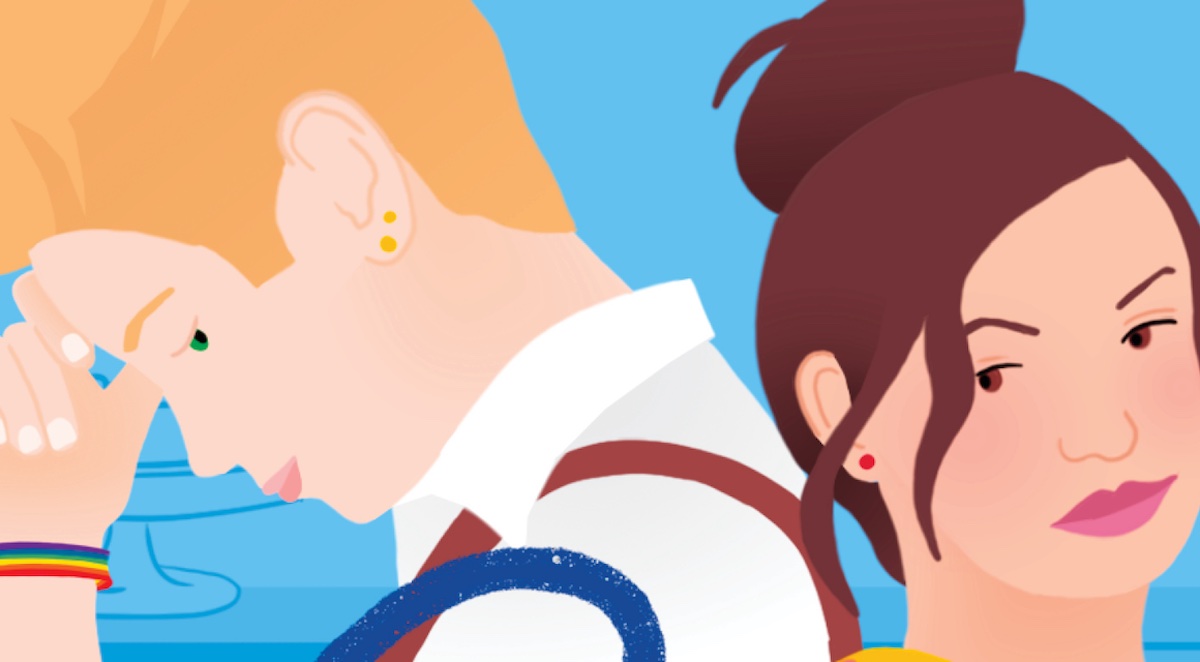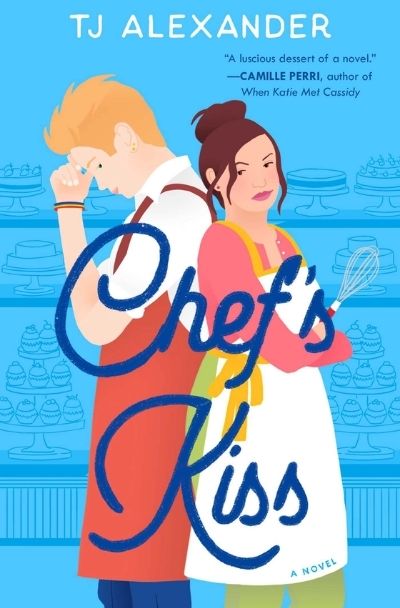Food as Fandom: Chef’s Kiss (Wait, Really? They Do?)

I learned to cook by watching strangers on television. I suspect a lot of people who grew up in the ‘90s had the same experience. When I was little, my mom relied on microwave pizzas, Shake ‘n Bake chicken, and Hamburger Helper to keep us fed. Homemade food was either meatballs in store-bought sauce or
Salisbury steak, always accompanied by canned green beans. I harbor no ill-will for these working-parent meals—I’ll still eat an entire box of Velveeta shells & cheese, no lie—but it meant I didn’t learn any family recipes at my mom’s knee.
Luckily, when I became responsible for feeding myself, a new crop of TV food personalities came onto the scene. Alton Brown, Rachel Ray, my beloved Ina Garten: they were all professors of different disciplines, and I was an eager student. I was also a literal student in college so there were a lot of opportunities to turn a half-hour of Food Network programming into a drinking game.
Some sample rules for 30 Minute Meals:
1. Drink every time Rachel Ray reminds us that oregano means “joy of the mountain.”
2. Drink if it’s pasta night.
3. Drink for “EVOO.”
I became obsessed with the foodie fandom. These were heady days when cooking was becoming cool. Unfortunately, my friends and I weren’t very good at it. We were fans of kitchen content just like we were fans of the early seasons of 24—we could no more reliably produce a well-cooked meal than we could defuse a bomb. Some of my early attempts at chili were eerily reminiscent of Jack Bauer’s worst days.
I can still remember those college roommate dinners in vivid detail. The time so-and-so used way too much salt on her chicken (“I didn’t even know you could have too much salt,” someone whispered behind her back); the time we tried to use a can of condensed cream-of-celery soup to make a cream sauce because cream was right there in the name; the time we almost came to blows over bell peppers (BELL peppers!) in a stir fry because someone complained about “spicy food.”
But with enough practice—and Barefoot Contessa repeats—anyone can learn to make macaroni and cheese from scratch. Thank you, Ina, patron saint of aspirational garden parties and parmesan shards.
These days, I don’t have cable, but I do have a long-ingrained habit of sitting down in front of a screen with a meal so I can watch someone “food while I food,” as my wife calls it. A new generation of YouTube chefs has come into my life. I can watch someone cook a five-course French menu hands-and-pans style with a slick voiceover, or I can watch someone struggle to deep fry a cheese-stuffed panko-breaded pork cutlet while their adorable toddler pops into frame. It’s the closest I can get to a dinner party in the pandemic era. I love food, and I love cooking, and I love watching other people cook.
That was the energy I wanted to bring when I was writing Chef’s Kiss.
Chef’s Kiss is a queer romcom about Simone, an uptight pastry chef working at an old-school cookbook publisher who is told she must pivot to video. While she fails miserably, her nonbinary kitchen manager Ray accidentally goes viral with a video series of their own—so of course these two seemingly incompatible people are forced to work together. It’s a story about food and food media, and what happens to the people who make it once the cameras are off. It’s also a straight-up love letter to the foodie fandom, which taught me how to feed myself.
In the book, Ray and Simone develop an online cooking show (and an enemies-to-lovers relationship with a heaping side of mutual pining). The concept of their show: Ray introduces an old-school dish (think a lot of jello-based salads, the kind of stuff my family made for special occasions) and Simone tries to create an “elevated” (read: Insta-worthy) version. It’s the kind of YouTube content I would love to watch while eating lunch. The only thing that could improve it is queer people kissing, which I had the foresight to include. Babish, take note.
I’m not naive enough to think that food entertainment is a recent invention; food has always been a status symbol, more than the sum of its calories. But in the age of social media, what we eat, where we eat it, and who cooked it has become a very public spectacle. The people I watch making food on my screen aren’t my friends, I know, but I feel a camaraderie with them that would be embarrassing if I cared to examine it too closely.
If I dreamed of Ina adopting me as her live-in hors d’oeuvres arranger decades ago, I can now indulge in a light fantasy of sharing cocktails and cheese plates with my current favs. Who’s going to stop me? You can’t. I’m a big fan.
TJ Alexander is an amateur baker and author who writes about queer love. Their debut novel Chef’s Kiss is out May 3 from Atria Books.

(images: Atria Books)
Want more stories like this? Become a subscriber and support the site!
—The Mary Sue has a strict comment policy that forbids, but is not limited to, personal insults toward anyone, hate speech, and trolling.—
Have a tip we should know? [email protected]